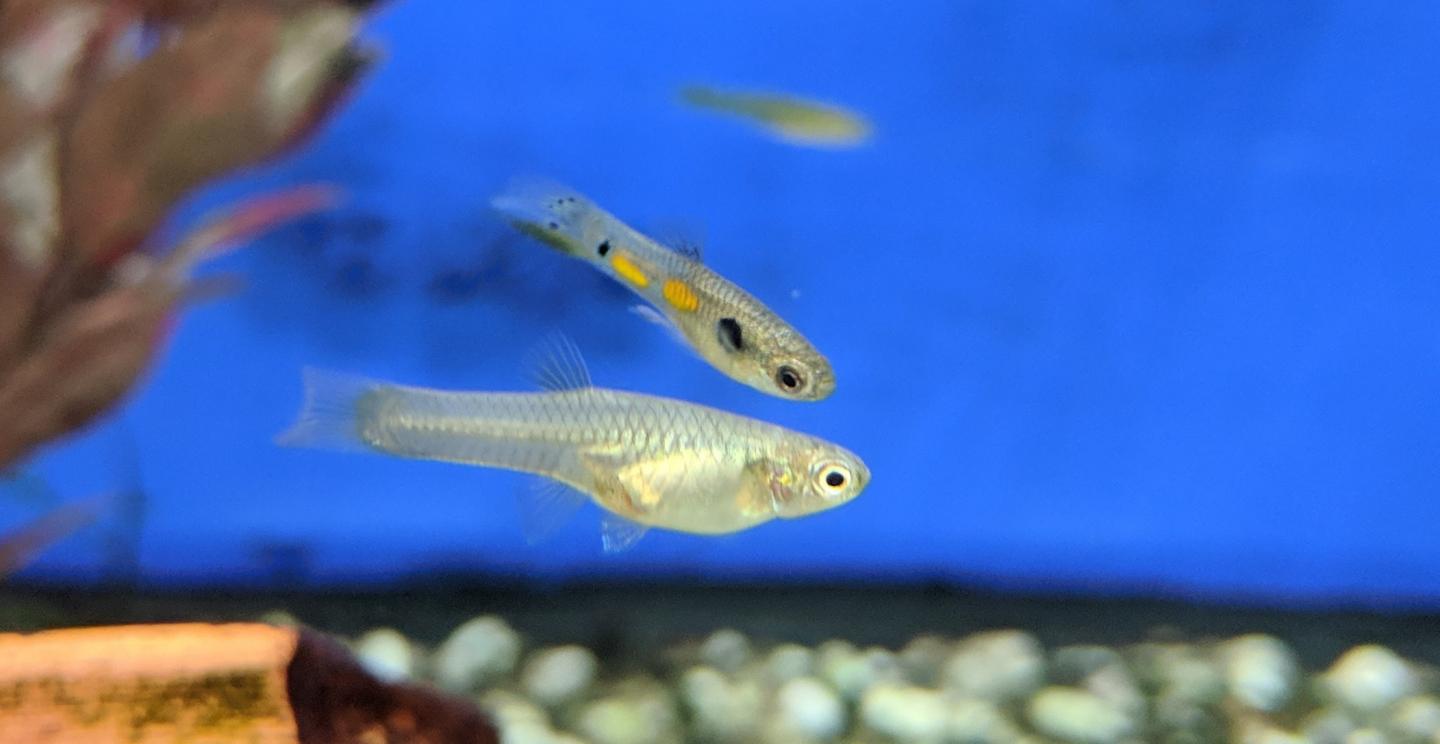
Credit: University of Exeter
Striking traits seen only in males of some species – such as colourful peacock feathers or butterfly wings – are partly explained by gene behaviour, research suggests.
The findings aid understanding of the phenomenon, which can help animals attract mates, but also make them more vulnerable to predators.
Researchers studied the genetics of the guppy fish, whose males are brightly coloured compared with the dull brown of females.
Researchers at the Universities of Edinburgh and Exeter used populations of fish bred in the lab to carry out detailed studies of how genes are passed on during reproduction.
Scientists compared genetic maps over several generations alongside entire genetic codes, to understand how genes were inherited over time.
In typical sexual reproduction, a set of genes from each parent would combine randomly to create offspring with a mix of features from both.
In male guppy fish, however, packages of genes in cells – known as chromosomes – were found to exchange genes only from their tips.
Many genes, including those that cause bright colours, are passed on from one male generation to the next almost undisturbed, and rarely mix with genes inherited by females.
Researchers also found that this low rate of genetic mixing between the sexes has enabled the evolution of the male’s brightly coloured appearance, by conserving the characteristic over many generations.
###
Their study, supported by the European Research Council, was published in Proceedings of the National Academy of Sciences.
Dr Roberta Bergero of the University of Edinburgh’s School of Biological Sciences, who co-led the study, said: “Insight into exchanges between male and female genes have helped explain how these bright colours have evolved and diversified in male guppies.”
Media Contact
Catriona Kelly
[email protected]
Original Source
https:/
Related Journal Article
http://dx.




